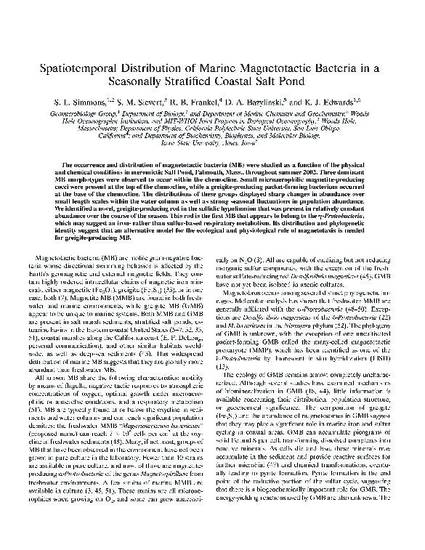
The occurrence and distribution of magnetotactic bacteria (MB) were studied as a function of the physical and chemical conditions in meromictic Salt Pond, Falmouth, Mass., throughout summer 2002. Three dominant MB morphotypes were observed to occur within the chemocline. Small microaerophilic magnetite-producing cocci were present at the top of the chemocline, while a greigite-producing packet-forming bacterium occurred at the base of the chemocline. The distributions of these groups displayed sharp changes in abundance over small length scales within the water column as well as strong seasonal fluctuations in population abundance. We identified a novel, greigite-producing rod in the sulfidic hypolimnion that was present in relatively constant abundance over the course of the season. This rod is the first MB that appears to belong to the γ-Proteobacteria, which may suggest an iron- rather than sulfur-based respiratory metabolism. Its distribution and phylogenetic identity suggest that an alternative model for the ecological and physiological role of magnetotaxis is needed for greigite-producing MB.
Available at: http://works.bepress.com/rfrankel/29/
